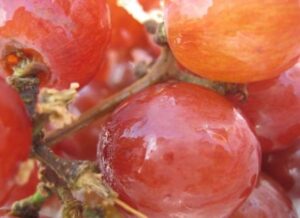Don’t Forget to Eat Your Bottle! Edible Food Packaging Has Arrived

As virtually every nation around the world struggles to combat waste management—particularly edible food waste—a Harvard Wyss Institute for Biologically Inspired Engineering professor may have tackled both problems at once.
Called WikiCells, Professor David A. Edwards and his team have developed an artificial—and edible—substance that has the potential to be used as a functional food packaging in lieu of plastic or other materials that often end up in landfills.
Nature, where fruit juices and fibers are contained within fruit skin that are essentially an edible packaging (Edwards cites the grape as a perfect example), was the inspiration for the development of WikiCells.
The edible packaging is made from a charged polymer liquid and actual food particles, which when hardened around a food substance will contain the food much like the hard shell of an egg that can be chipped or cracked open to reveal the actual food, and of course, itself eaten. The WikiCells can even be served as meals such as the tomato membrane that contains gazpacho soup or a grape membrane full of wine, and of course, the steamy hot chocolate encapsulated in a chocolate membrane.
Edible packaging further eliminates the inaccessible bits of food left inside containers (think yogurt lid or spaghetti sauce jar) that contribute to the 100 million tons of food waste generated just in the U.S. each year.
And if Edwards has his way, the possibilities will be endless once the formula is further developed and products become available to the general public (hopefully within the next year), giving people in all communities across the world the ability to store food and beverages inside of food, reducing dependency on petroleum-based plastic bottles and decreasing the amount of food waste.
Keep in touch with Jill on Twitter @jillettinger
Image: mrsdkrebs

